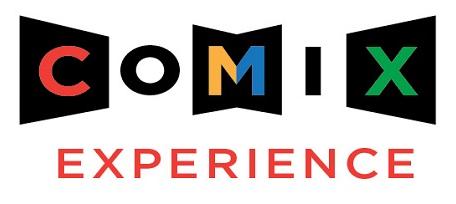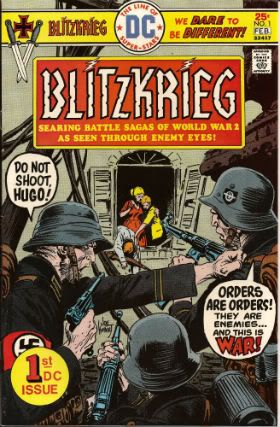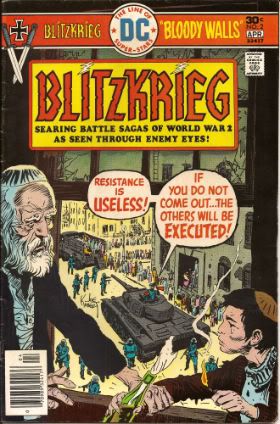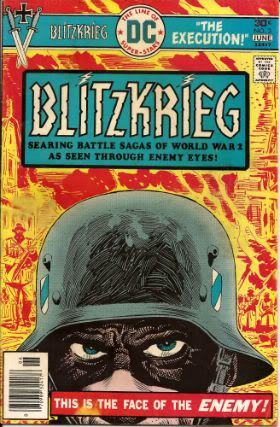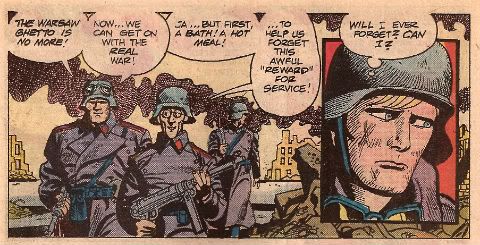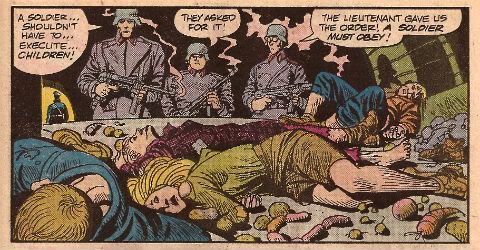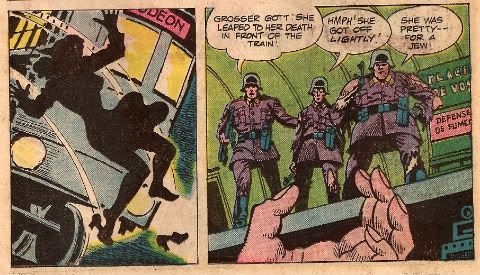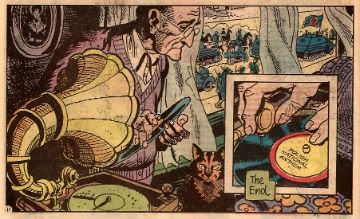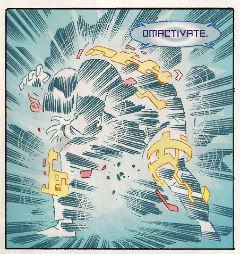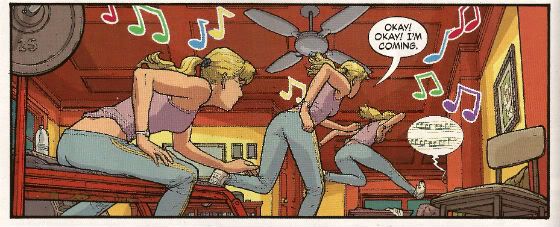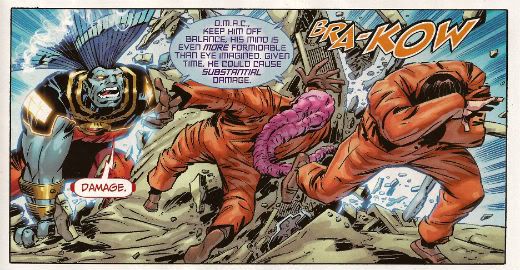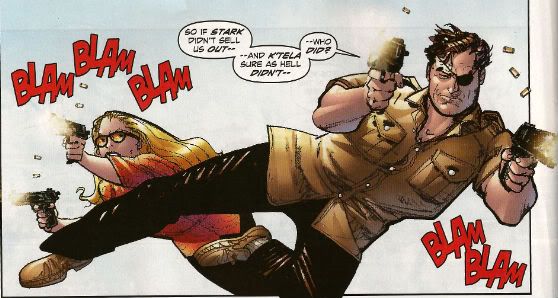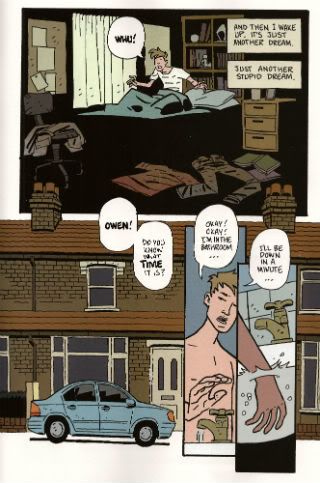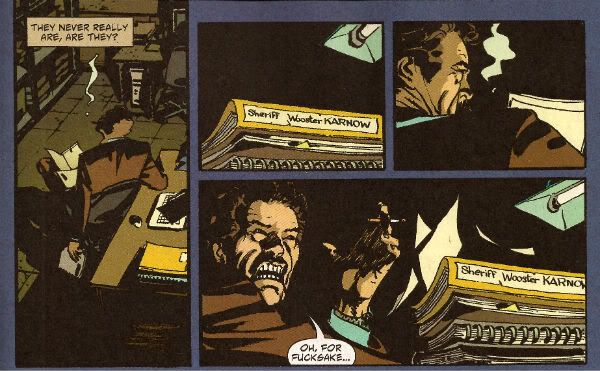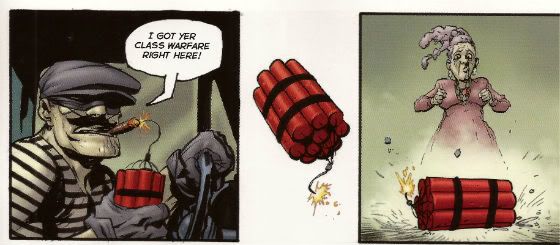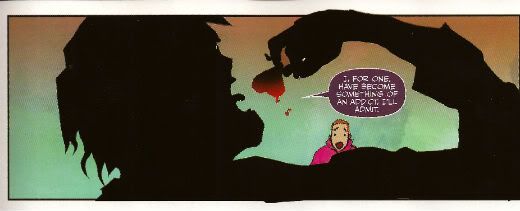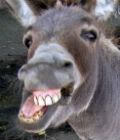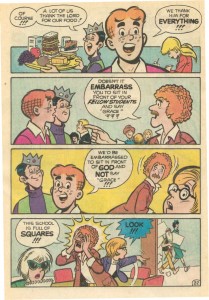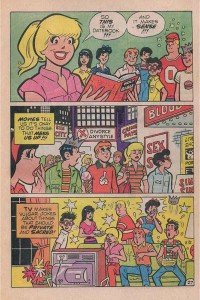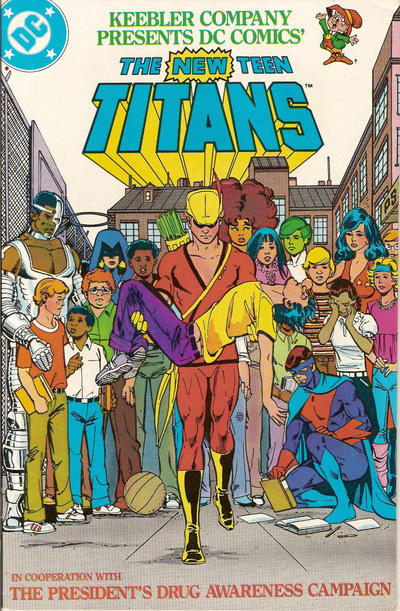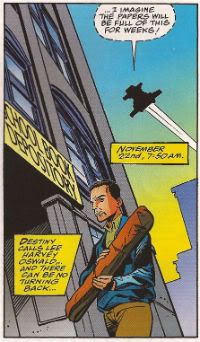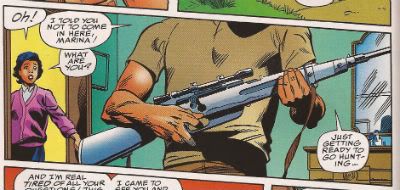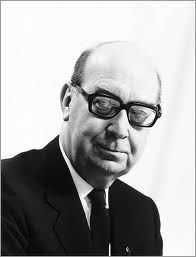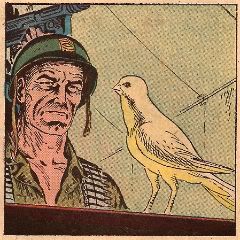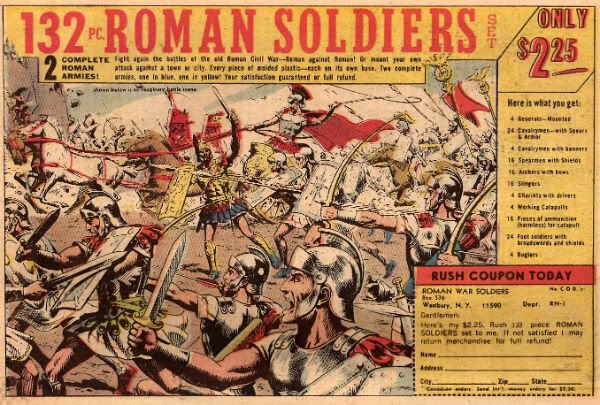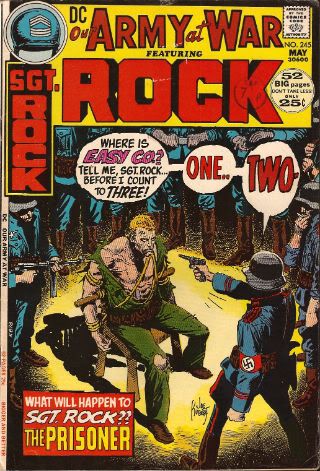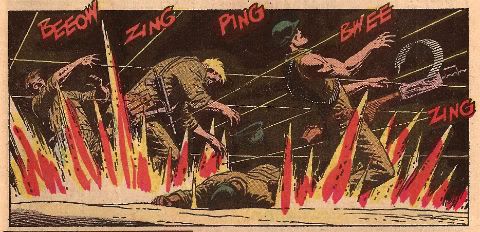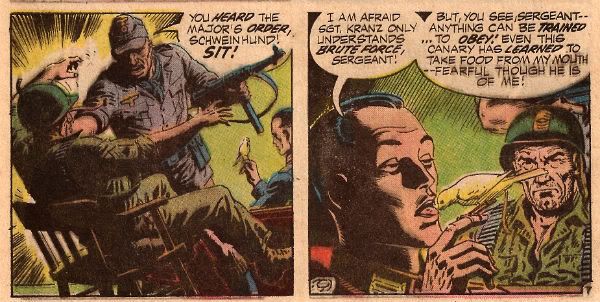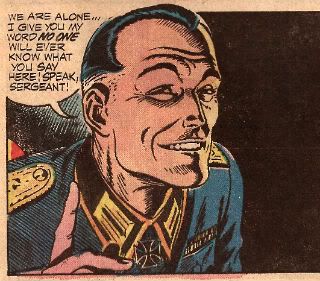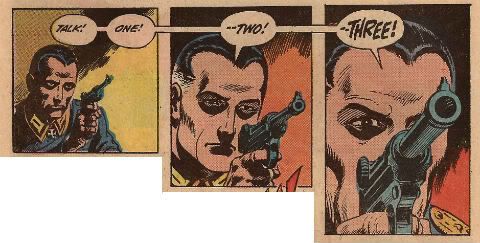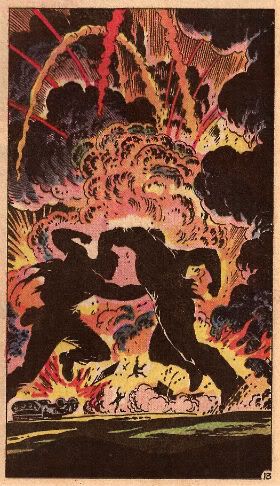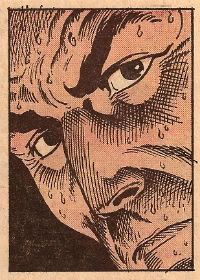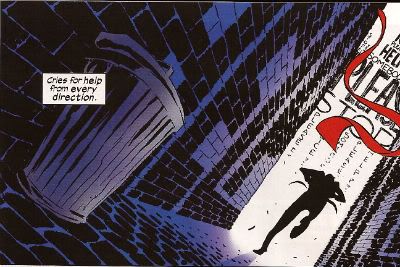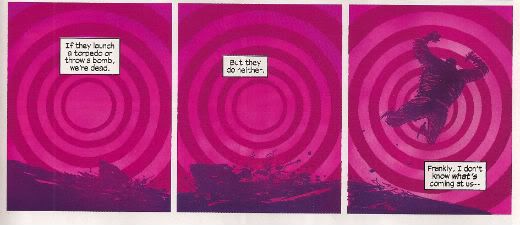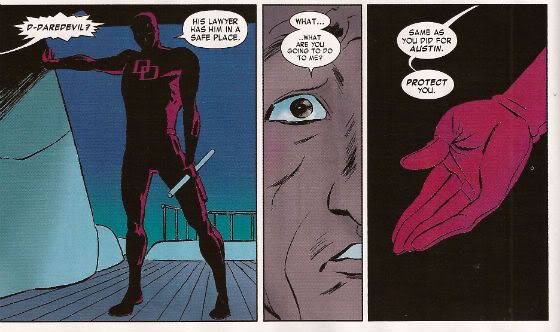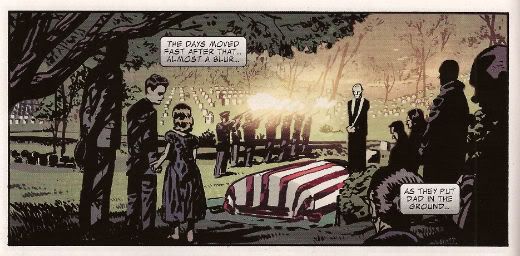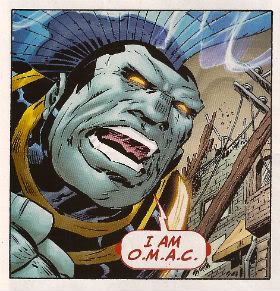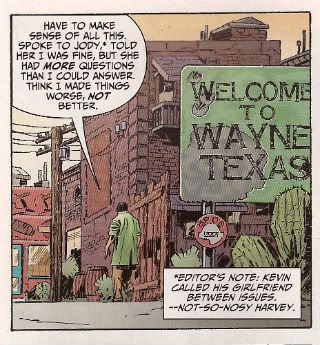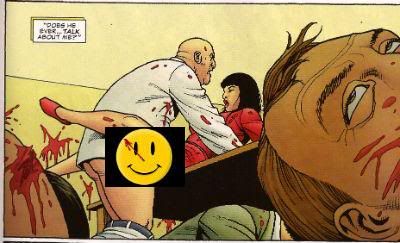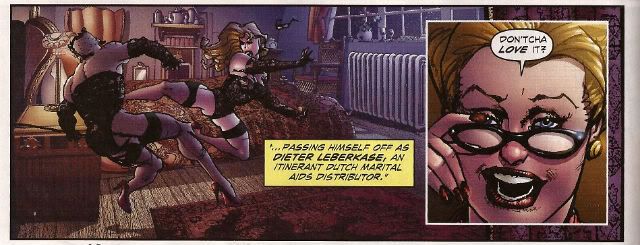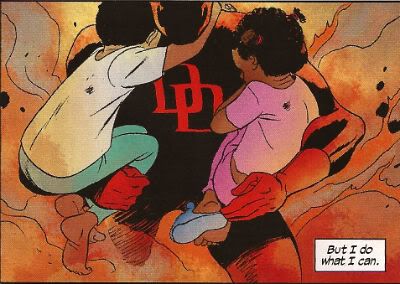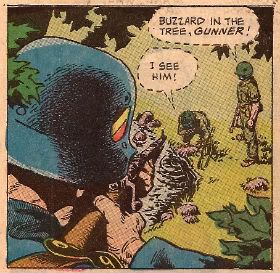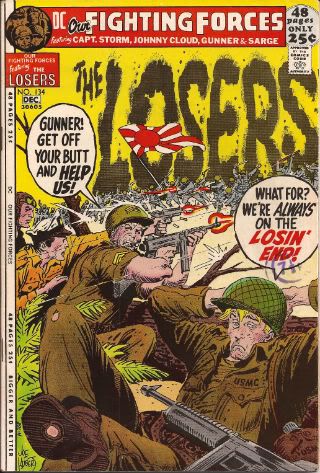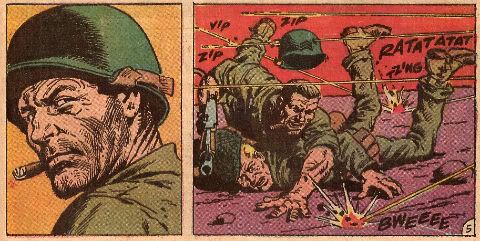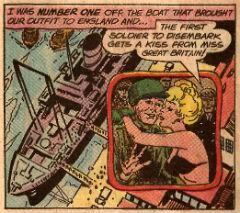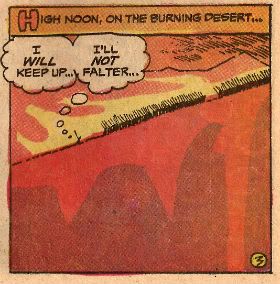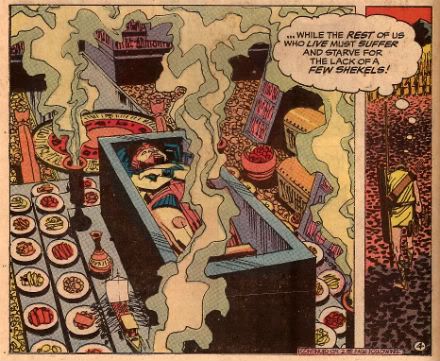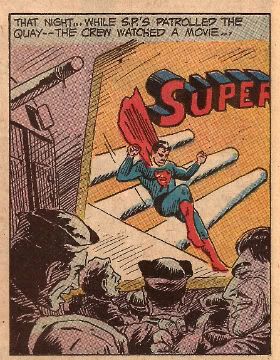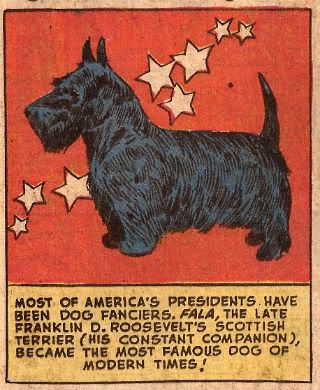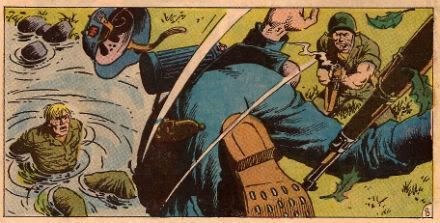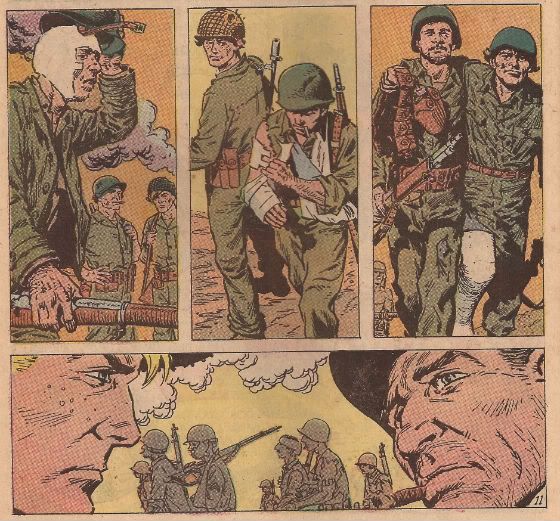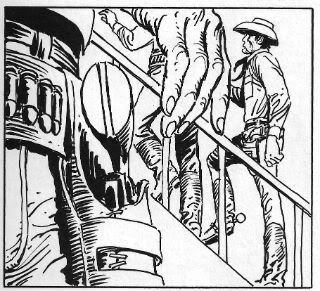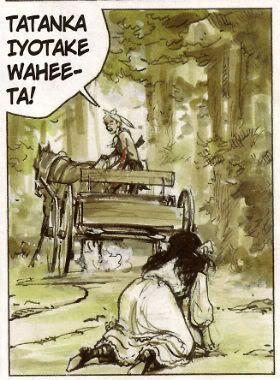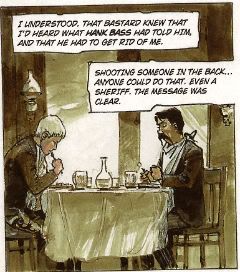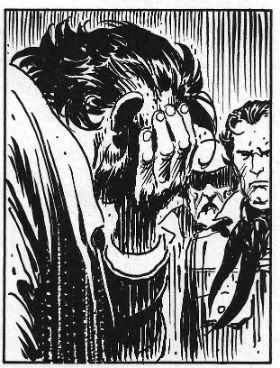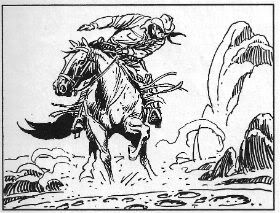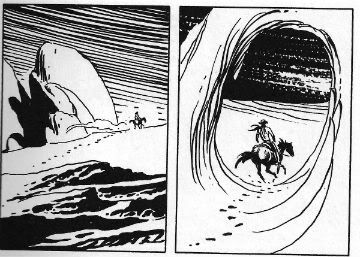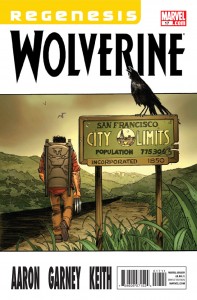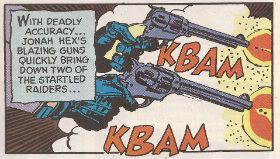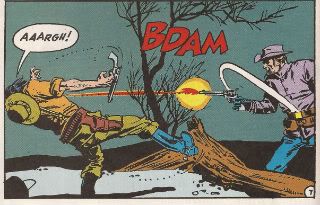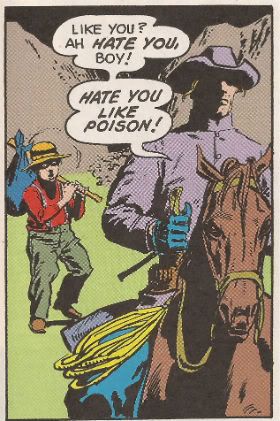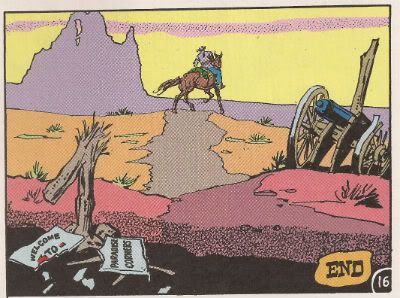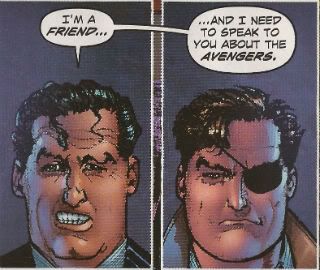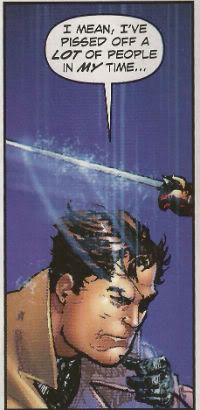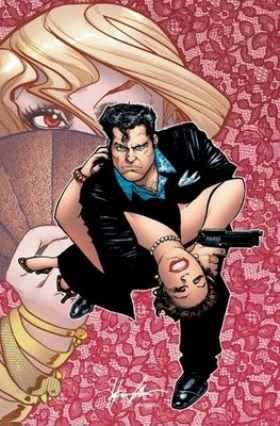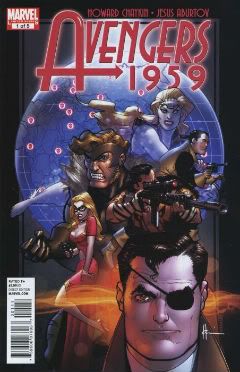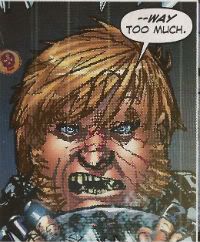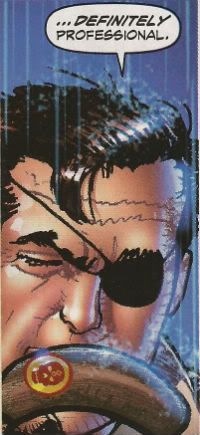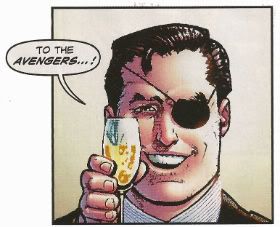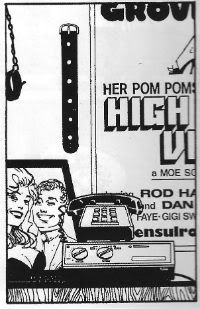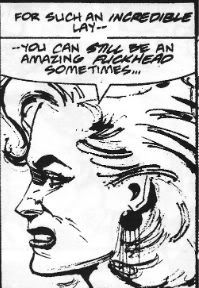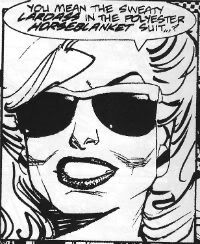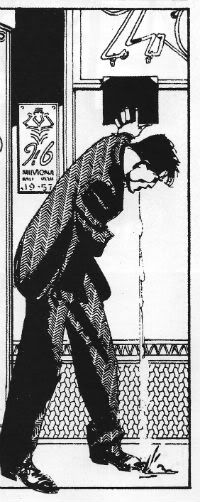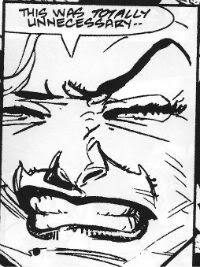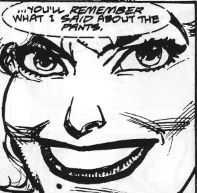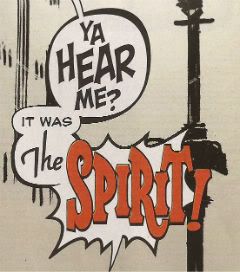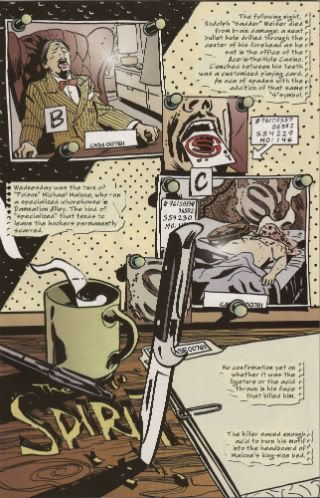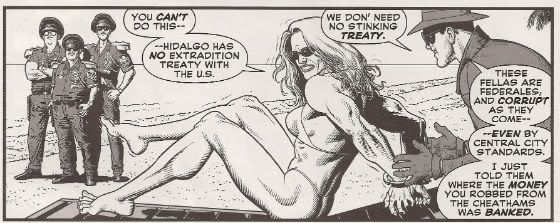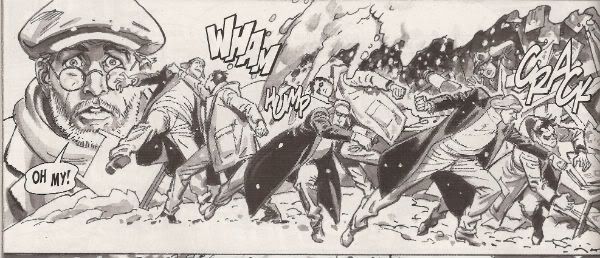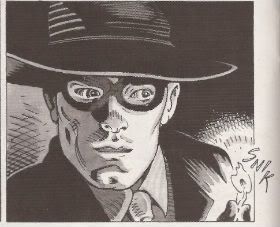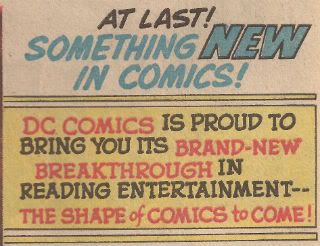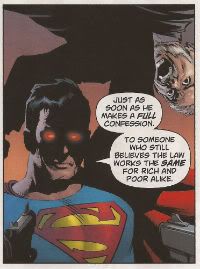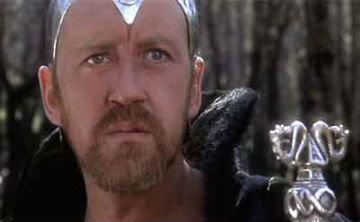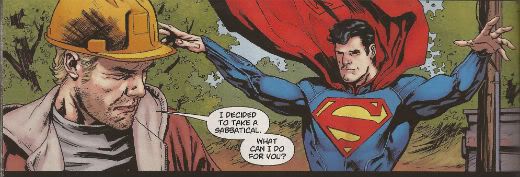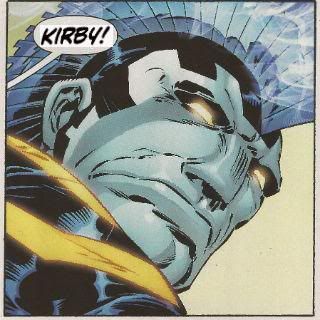 THE HOMELAND DIRECTIVE by Robert Venditti, Mike Huddleston, Sean Konot, Chris Staros, and Jim Titus, published by Top Shelf Productions in 2011, copyright Robert Venditti but not Mike Huddleston.
THE HOMELAND DIRECTIVE by Robert Venditti, Mike Huddleston, Sean Konot, Chris Staros, and Jim Titus, published by Top Shelf Productions in 2011, copyright Robert Venditti but not Mike Huddleston.
"Even with its plot deficiencies for this reviewer, however, the book is still strongly recommended over the majority of recycled, superhero punch fests."
-- The Comics Journal.
I.
REVIEW #1: A NEGATIVE REVIEW.
THE HOMELAND DIRECTIVE is a wafer-thin conspiracy "thriller" that feels more focused on pitching a lukewarm Sandra Bullock movie, than on anything I might care about-- stupid things like characters, theme or story.
Is there a high concept premise, stated on the last page of the first issue?
Oh, I see you've read an independent comic in the last 10 years. Congratulations to you! In this case, the last page of the first issue ends with a man saying to a woman, "You're here because the United States Government may be trying to kill you." Then Rip Taylor runs through the door and yells "HIGH CONCEPT!" and throws confetti everywhere. Can't miss the high concept in modern independent comics-- there's always a high concept; just turn to the last page of the first issue, and there it is, next to the photograph of Rip Taylor.
The high concept appears to be What if the government were trying to kill you, and the only thing stopping them were a team of government employees rebelling against their masters.
There you go.
Let's all just sit and admire it.
That's all there is to this comic, so the least we can do is just sit and admire it for a little while.
Just breathe it in.
Soak it up.
Hoo-boy, I'll tell you what-- these are our awesome years.
It's got everything: what if's; governments; stopping; rebelling--everybody likes to think they rebel against things; that's the premise of every Nike commercial ever made. It's got a team of something. Do the hipsters know about teams? Probably; I'm betting everybody likes teams. The letter I isn't in the word "Team"; neither is Q or F; the word "DILDONICS" is not hidden anywhere in the word "Team", in case you were worried. Legitimately worried about technologically advanced dildos ganging up against you.
Yep.
Yep yep yep.
That is certainly a high concept.
That'd have been $15 well spent, if i was a person who enjoyed purchasing high concepts instead of stories about characters.
PSEUDO-FOOTNOTE: instead of making comics, why don't people just write their high concepts onto postcard and sell the postcards, instead? It'd save time, certainly. Not having to fuss with pretending to like comics, that would have to free up a couple hours in a day. "Here is a postcard with the word 'vampire' on it. Please give me all of the money!" You can hire screenwriters later to figure out the characters and the story.

If it worked for RED (2010), it can work for a postcard.
How is the HOMELAND DIRECTIVE paced?
The book noticeably feels like a miniseries that was jammed into a graphic novel after a vote of no confidence. Maybe in the material; probably in the marketplace. "Boo-hoo, comic fans are too busy reading recycled superhero punch fests to read movie pitches"-- that noise. Anyways, every 20-to-30 pages there's a cliffhanger and a new "chapter" starts.
A graphic novel written like movie except paced like a serialized comic book-- the best of no worlds.

Here's how movies are paced: usually, 9 times out of 10, Ryan Reynolds (playing either an architect or a guy who works at a magazine about architecture) is given a microchip, and has to go on the run from a villain (Jeremy Irons, Charles Dance, Miranda Hart, anyone British will do). Katherine Heigl (playing either a dessert chef or the owner of an independent bookstore dedicated to cookbooks for desserts) trips and accidentally fellates a penguin, so that the audiences in Flyover States will root for her adorkable klutz character. Katherine Hiegel fellating a penguin usually marks the end of Act One. Thereafter, the stakes are supposed to constantly escalate-- e.g., the only way for Ryan Reynolds to save the United States of America is to take a shit on the Lincoln Memorial and wipe his ass with Ben Franklin's Secret Map of America's Most Noble Whorehouses. Katherine Heigl has to either sabotage a wedding, or in the alternative, sabotage a wedding. One scene leads logically to the next. Finally, when times are at their very darkest, our heroes find a way to outthink the bad guys and save the day. Ryan Reynolds wears a wire and tape records the bad guys talking the shit, Katherine Heigl gets over herself and attends the wedding, the penguin ejaculates onto Ryan Reynold's abs, credits roll, everyone goes home happy, $60 on 3-d glasses well spent.

Here's how a serial comic book is paced: there's a page of nothing much interesting happening so that the reader can settle in. Usually, there will be a monologue about someone's pappy over a bunch of establishing shots of a road leading to a small town in Texas, the kind that only exist in comics where everyone spits and works at the spittin' factory and carefully mentions Hank Williams (Senior!) in their conversations in order to prove their small town Texas credentials. There will be a caption in one of the first four panels telling you that this scene takes place "Yesterday" or "13 minutes from Tuesday." Then, there are 18 pages of tedium, 10 of which will usually be double-page splash pages of government buildings, something exciting like that. (PSEUDO-FOOTNOTE: Creators used to get 20 pages of tedium, but there've been cutbacks which creators are quick to tell you has drastically changed how they go about creating tedium.) Finally, the 20th page is a CLIFFHANGER. Maybe, theoretically, it might be something exciting happening, but 9 times out of 10, the cliffhanger will just be a splash page of some dude sitting with his thumb in the ass saying something like "American farts come out red, white and blue," promising to the reader that maybe next issue someone will fart and it will be colored red by some underpaid colorist. But the next issue won't open with the red fart coming out of someone's ass, though, like you'd hoped-- instead, the whole cycle will start over again, and it'll be another page of nothing much happening in small town Texas. Except it'll be six months later and someone will just be narrating after the fact about what they were thinking when the red fart came out of their ass, and you'll think, "Oh, I guess you had to be there, like that person was." But oh well, that's how comic books work.
A movie and a serial comic book are intrinsically paced differently. You notice when serial comics try to imitate movies-- you're watching a movie that's lurching, a movie that starts and stops and starts and stops and starts and stops. A graphic novel written like movie except paced like a serialized comic book seems a gorgon structurally unlikely to satisfy fans of any of those three things.
Who are the Characters in THE HOMELAND DIRECTIVE?
The main character is a diabetic female microbiologist who has no other distinguishing features, like a personality or goals or non-expository dialogue. It turns out the government is doing something nasty with microbiology, so her being a microbiologist lets her deliver expository dialogue setting forth the government's nefarious plan. And that's it. That's all you get. If she has a single line of dialogue that reveals anything about her other than "diabetic female microbiologist," I don't fucking remember it and can't find it flipping through the book now. Maybe there's one buried in there somewhere; but it didn't stick.
As for her team of rebels, there's a black character. He's the one who uses guns. There's a nondescript blonde man. I had a hard time remembering who he was WHILE I was reading the comic, let alone now. I honestly have no idea why he's in this comic, what he contributes to anything. And there's the guy who is good with computers. He's fat, wears glasses, and is a momma's boy-- you know, a guy who likes computers; you've seen Revenge of the Nerds or Head of the Class, that's what all those guys are like.
There's nothing rebellious about any of these characters or any indication why any of them would be the types who would rebel against their government. There's no back story. None of them seem to believe in anything in particular. They're politically motivated characters in a political thriller without any politics.
Do you like exposition? Then, you're sure going to be rooting for word balloons to point at these drawings of no-dimensional men in suits! Yessiree!
Oh, and the bad guys. The bad guys include (1) a guy with a red nose-- no other distinguishing characteristics, (2) a woman with red hair-- no other distinguishing characteristics, and (3) the most "fleshed out" character in the entire comic-- a serious government guy who complains about how politicians don't get how important the mission is. Welcome to The Rock!
http://youtu.be/FxKtZmQgxrI
PSEUDO-FOOTNOTE: As a superior example of what I'm trying to describe here, the Red Letter Media review of the Phantom Menace might be helpful, for your reference. At about 8 minutes into their 90 minute review, Red Letter Media asks a group of people to describe the characters in the original Star War Films. To describe Han Solo, they use words like "arrogant," "rogue-ish," "dashing," "scoundrel," and "pig-headed." To describe Natalie Portman's Queen Amidala character, they use words like "Natalie Portman," "Queen," "normal," "makeup," "monotone," and "that's impossible to do." Do you want to attempt this experiment with comics? I don't!
What is the Theme of THE HOMELAND DIRECTIVE?
The plot of a typical political conspiracy thriller is that a character learns that their faith in an institution has been misplaced. Robert Redford works for the CIA but then he learns that, oh say hey, maybe the CIA and the Government and the Press aren't on his side; bummer, dude; the end. Themes of institutional distrust should obviously resonate right now-- churches are okay with kids getting raped; universities are okay with kids getting raped; at this point, if there was a scandal about MADD or a PTA letting kids get raped, I'm not sure I'd even blink.

Here's how THE HOMELAND DIRECTIVE deals with these powerful themes:
The bad guys turn out to be a rogue faction of the government comprised of roughly two evil characters, but as soon as the proper authorities learn what they're up to-- why, they just put a stop to that kind of nonsense, lickety-split, and make sure our heroes get the finest medical treatment this country can muster, right away. You don't have to worry about your institutions, at all-- the President's on the side of the good guys. Nothing to worry about; the two bad guys are easy to spot-- they're the two people muttering about the mission; just avoid bad guys, of whom there are two, and life will be hunky-dory.
That's comforting. And that's what you want from a political thriller-- to be comforted that the decrepit status quo of our failing empire is acceptable, endless, and eternal. As some of you may remember, my favorite political thriller was that movie BRIDE WARS because at the end, you realize, hey, friendship really does matter more than having the perfect wedding, especially if the cost of a perfect wedding is a brutal sub-Saharan BRIDE WAR.
http://youtu.be/k0SJ-mTHmQg
Here's how THE HOMELAND DIRECTIVE's inside cover-flap describes what the book has to say about our "Orwellian present":
"In an era when technology can either doom or save us, is it possible for personal privacy and national security to coexist?"
Translation: the government owns computers, you guys. Just like Orwell predicted! Also, just like anyone who saw that movie Enemy of the State can predict after about 5 pages of this comic-- about 99.999% of this comic comes from Enemy of the State. Do you remember Enemy of the State? Seth Green uses a computer to try to hunt Will Smith; there's a weird, unnecessary subplot about the Mob; Will Smith punches Seth Green and the Mob and yells, "Welcome to Earth"; the end. Directed by Tony Scott, though, so the camera goes all whippity-whoo...? Have you seen it? Then, congratulations-- you've just read THE HOMELAND DIRECTIVE using the power of your MEMORIES. (Including THE HOMELAND DIRECTIVE's lame, in-no-way-believable Mob subplot!)
Does the comic illustrate that theme of "privacy vs. security" in any way other than having computers track the heroes? Does it attempt to answer the question whether privacy and security can coexist? Does it take a stand on anything? Does the arrangement of the story's plot elements suggest anything resembling a meaning or a point to any of the proceedings? Is anything being expressed about the world, life, the cycle of suffering and misery we're all reincarnated into endlessly, other than "it has computers and cameras and nerds in it"? Is it fun just being asked questions? Did you know the human head weighs 8 pounds? Did you know bees and dogs can smell fear? Did you know that my next door neighbor has three rabbits? Did you know the kid from JERRY MAGUIRE is 21 years old now?
What is THE HOMELAND DIRECTIVE's Story?
There was a writer named Lester Dent-- his claim to fame is having written the Doc Savage novels. Tens of millions of them, all about Doc Savage and his incredibly boring man-companions-- Fats the Lawyer, Slappy the Cab Driver, the guy with the moustache who says "Whiskey on my Moustache!", and Joe the guy who argues with Slappy which is never, ever, ever not hilarious. And Lester Dent explained how he wrote all those novels in a very simple how-to manual called the The Lester Dent Pulp Paper Master Fiction Plot, a "formula, a master plot, for any 6000 word pulp story." A document that reflects how people understood stories worked more than 50 years ago, in a far less story-saturated age.

Here are two excerpts therefrom from the final section of that formula-- how Lester Dent thought a story should end: "FOURTH 1500 WORDS ... The hero extricates himself using HIS OWN SKILL, training or brawn. The mysteries remaining--one big one held over to this point will help grip interest--are cleared up in course of final conflict as hero takes the situation in hand." The final line of the formula is a questions for the Writer to ask themself: "Did God kill the villain? Or the hero?"
In the subsequent 50-plus years, these basic guidelines are still considered pretty good ideas. Consider Hollywood screenwriters Terry Rossio & Ted Elliott's Wordplayer website: "I referred to a checklist of basic 'rules' provided by a small production company ...#58. Characters must change. What is the character's arc? #60. Is the lead involved with the story throughout? Does he control the outcome of the story?"
Dan Harmon (COMMUNITY, WATER & POWER) has his take on story-- the thing he describes as "Super Basic Shit" in his Channel 101 tutorials-- "A character is in a zone of comfort, But they want something, they enter an unfamiliar situation, adapt to it, get what they wanted, pay a heavy price for it, then return to their familiar situation, having changed."
How about THE HOMELAND DIRECTIVE?
Plot Summary: Female Microbiologist is kidnapped by rebellious government employees who tell her that the government is trying to kill her. She asks to be let go but then when they say no, we don't want to let you go, she says fine and sticks with them. They take her to a computer and she finds out the government's evil plans, on google or gmail or whatever. She figures it out, oh, not through any investigative effort on her part or utilization of her skills as a microbiologist-- that might accidentally involve a character taking actions and making decisions, and those actions/decisions having consequences. Who'd want to see any of those things happen in a comic book? Instead, she's just reminded, "Oh yeah, I saw this five years ago before this comic even started" (or words to that effect). Victory through expository dialogue! Then she and her friends tell the government that she knows about what they're up to, and the government IMMEDIATELY stops all evil activity and removes the wrongdoers from power. The main characters never face down the bad guys, but it's okay because their lives go back completely to normal. The comic ends with her telling the other rebellious employees that she's not going to help them in the future, and she's going to go back to her old life of being a microbiologist, having failed to change in any way.
The end.
- Under the Harmon formulation, HOMELAND DIRECTIVE is about a character in a zone of comfort enters an unfamiliar situation, fails to adapt to it, fails to pay a price for any of her actions, and then returns to her status quo, completely having failed to change.
- Under the Rossio-Elliot formulation, the main character (who has no arc) does not control the outcome of the story-- the outcome of the story is always in the hand of the government.
- Under the Dent formulation, the bad guys are not vanquished by the hero-- God (or the President of the United States or whoever) defeats the villains.
Nothing is learned; no one changes; the status quo endlessly reasserts itself, see you in the sequel, par for the course for a Comics that worships at the altar of "icons," "modern mythologies," a willful and deliberate blindness towards the concept of mortality.
But!
Maybe you'll say that there's other ways to evaluate a story, and I'm overfocusing on whether the hero triumphs rather than asking other questions. Okay, fine, fuck-it: let's ask other questions. Do the the events of the story logically motivates what happens from scene to scene? Does suspense build from scene to scene? Is what the audience is told in earlier scenes pay off in later scenes? Do characters behave in logical ways based upon the events of the story?
Let me give you three examples of why I personally think the answer to those questions might be no and/or "Hellz No."
Example #1:
The bad government guys are about to murder Female Microbiologist, when she is kidnapped by the rogue team. Female Microbiologist has no reason to trust the rogue team who has abducted her... until Female Microbiologist sees that the government has released a false news story claiming that she is being sought for questioning in a murder, and realizes she has to trust the rogue team if she wants to survive the government's plainly evil plans.
So, does that "track?" In order for you to believe that scene, you have to accept that the government would immediately-- no hesitation-- attempt to FRAME A WOMAN IT SAW BEING KIDNAPPED FOR MURRRRRRDER, at the drop of a hat, if it wanted to find her. How else can the government find anyone? Remember when that little JonBenet Ramsey went missing, and the government was all "We think she killed Colonel Mustard in the library with a lead pipe." OH WAIT NO THE GOVERNMENT DECLARED HER MISSING AND TRIED TO FIND HER FIRST. But that doesn't happen here because...
Because... ?
The government saw her be kidnapped. It has NO reason to think that she's the enemy, or to make an enemy of her. Anyone: why doesn't the government issue a news story with "White Lady Got Herself Kidnapped" instead? Have you ever seen what happens when a white lady gets herself kidnapped? There wouldn't be a soul alive who wouldn't know what Female Microbiologist looked like.
http://youtu.be/TeCMCJc5-jg
PSEUDO-FOOTNOTE: I refer you now to the late Patrice O'Neal for further elaboration upon this point.
Example #2:
We are told the government is looking for Female Microbiologist, and that she has only one weakness-- she needs diabetes medicine. The government will try to catch her through her diabetes medicine! They will post look-outs at all of the pharmacies! She will not get her insulin! She will die! How will she ever get out of this predicament?
Answer: she has one of her friends go and get diabetes medicine for her.
Oh, okay. Problem solved. The diabetes problem is solved by SOMEONE ELSE buying diabetes medication. Exciting. Exciting stuff. Fuck you, Rubiks-- the world is my oyster, now.
Anyways, so Black Gun Guy walks into a pharmacy, and puts BRIBE MONEY and his GUN on the counter and says "Give me diabetes medicine." Now, I don't know if you know how bribes work, but-- a gun is not actually required to bribe someone. Bribery fun-fact: very often guns help a person avoid the necessity of bribing another person. If you have a gun, you don't actually have to bribe a person-- you can just wave your gun at them. Or conversely, people will sometimes accept bribes even when they're not at gunpoint.
But. You know. Most people in the U.S. have never bribed anyone so I can see how they might get confused as to how it works. "I am here to bribe you. Here is the money I will bribe you with. And here is a grenade. I will now take out the pin and put the grenade into my pants." No, no: you can stop after "here's the money." The money is all you need for a bribe! The money is quite sufficient!
Example #3:
The comic is about a team of slick, knowledgeable government operatives who have to somehow, against all odds find a way to hide from the government's advanced surveillance technology, right? And so, in order to get help hiding from the government's advanced surveillance technology, they go and visit a MOBSTER. Because when you're trying to hide from the government, probably the very best place to hide is hanging out at a mobster's house. The government never watches the mob. It's not like there's an entire federal agency that's spent decades famously watching mobsters, after all.
http://youtu.be/ugwmaeURj1Q
Most private place on earth.
How is the--?
Not for me. It's not for me! What part don't you get? How are you still asking questions?
***
"THE HOMELAND DIRECTIVE mixes the conspiracy theory of "Enemy of the State" with the tense, against-the-clock action of "24," then throws in a dash of "Contagion" for terrifying, ripped-from-headlines danger.
In many ways, THE HOMELAND DIRECTIVE is actually superior to The Surrogates in that [the author] was clearly able to pay more attention paid to pacing and character development this time around, and it's as easy to see the story playing out on a movie screen as it is to see it unfold on the page."
-- The Independent Film Channel
II.
REVIEW #2: THE POSITIVE REVIEW
Back up: here's the thing about ENEMY OF THE STATE, though-- I didn't like the story or characters there either. Fuck a Will Smith. But if it were on TV right now, I'd leave it on. Simple reason: I'll watch a Tony Scott movie. Shit, I'll watch a Tony Scott movie. I saw his movie where Denzel time-travelled; I saw his movie where Denzel was all on fire; I saw his movie where Denzel drove a train the size of the fucking Chrysler building all up Captain Kirk's ass. I saw those in the theatre; you know I will watch a Tony Scott movie.
http://youtu.be/BKc8m0apNh4
Oh, he has his themes-- he's made "the man who had been spurned by his society is the only man who can save it," way more than once; but my shallow interests are less in his themes than his surfaces.
Which brings us the reason I bought HOMELAND DIRECTIVE, to begin with: Mike Huddleston.
In THE HOMELAND DIRECTIVE, Huddleston seems to shares Tony Scott's basic game plan: distracting the reader by blasting them with style to process, in order to avoid them spending over-long thinking or caring about the story. Hey, if Denzel's riding a train, I want to be distracted; otherwise, I'm just watching Denzel riding a fuckin' train. Distractions are not only welcome, but requested. On one page of THE HOMELAND DIRECTIVE, page 41, over the course of six panels, Huddleston has seemingly six different color schemes: colors careen from representational to non-representational, three-color to two, to near black-and-white with spot colors, zipatone effects to their total absence to an inbetween place-- a sort of zipatone smear on top of a silhouetted figure, panels with white as a color, panels without, panels where the line drawings are in traditional black ink and panels where there's no line-art at all and the art is in a solid burst of color.
Fuck the story; a speech at a science conference drips with day-glo psychedelic colors, reasons unknown. Have you ever been to a conference where scientists spoke? I have; went to engineering conferences when I was a kid; neither day-glo nor psychedelic. Who cares? Maybe that's not something a person does when they're confident in the story they're telling. But sometimes Hollywood's going to go and make themselves a DEJA VU, and that's not when you send in Ridley. That's when you want Tony Scott on that wall.
http://youtu.be/khFEdsBEVU0
It should be noted, however, that Huddleston doesn't go full-on DOMINO here. The art doesn't spin off into the stratosphere with every page, but usually stays tethered to some recognizable gravity: a scene of computer nerds, in front of graph paper; a drive on a sunny day, rendered in burnt oranges; a scene in a dirty hotel room, drawn over a painting suggesting stains, discoloration, grime; a scene of fully painted characters exposed in public becoming empty line-drawings as they go back into hiding (hiding depicted as a scrawl of black chaos at the edge of a panel). There are many more examples, but I think we're actually getting into the realm of legitimate SPOILERS where Homeland Directive is concerned, far more than any of the plot details I've mentioned so far.
Granted, my distaste for the story content make some of his choices seem desperate to me. A page of random strangers dying is in as close to spectacular full color as the book ever gets, as if to impose upon the reader an importance to story events that are plainly meaningless-- people we've never met, suffering imaginary fates we couldn't possibly care about. Action scenes in pure red-ish hues-- okay, sure, I get it; it's still two pages of drawings of people pointing guns at one another, where the story doesn't have the bullets hit into anything meaningfully; action scenes in American comics are still basically drawings of little boys posing and voguing at one another. A black-and-white talking head scene with a girl's hair in bright red ain't going to save two pages of "Our man was able to obtain the number for a cell phone in their possession and BOCA is monitoring its location." The only thing that can save that is a certain Mr. Jesus Christ, J.D.
Goddamn, Huddleston made drawing comics look FUN. Which is an underestimated thing, the importance of that for readers. I never cared about anatomy when I was a teenager-- the Image artists made drawing comics look like the most exciting job there was. Most comics don't look fun at all: they look like chores. Who wants to take all those photos? Who wants to spend all that time on Google Image? Have you ever seen a perspective grid? It looks like fucking homework; anything where there's a "right answer" just sounds like a grind. But HOMELAND DIRECTIVE doesn't look like algebra; shit, he's failing as often as he's succeeding. Some of the attempts to collages in photos, I think he pretty much eats the pavement (e.g. about half the times a car turns up-- OOFA!). But all the same, I think to feel anything but affection for that would be a Grinch move.
http://youtu.be/5gGZAIFteAg
There's one panel I liked more than any other though.
The bottom of page 91. Huddleston does these establishing shots, where it's photos of buildings and clip art of trees, pasted together-- as if these different items were still snapping into place when the panel was printed onto paper. There's another on page 104, but the bottom of 91 is the best in the book. One of those fast-zoom establishing shots you'd see in a Tony Scott movie (or the Coen Brothers' Burn After Reading, where they were trying to channel Tony Scott). A van driving into a city that's still being pasted down onto the page. The establishing shot on page 91 tells the story that the inside flap promises, in a way the story never matches-- characters in a van hoping to drive faster than a Google map can load around them.
http://youtu.be/8PedtPtjP2w
If THE HOMELAND DIRECTIVE makes a persuasive argument about anything, it's an argument on behalf of BUTCHER BAKER. Tony Scott doing respectable SPY GAMES, with helicopter shots circling Redford and Pitt... he did it, and it wasn't his worst movie, but ... let Ridley direct the highbrow Oscar-bait shit. For Tony Scott, I want to see trains splattered with graffiti, teddy bears exploding in gunfire, Bronson Pinchot covered in cocaine, Denzel channeling Tarantino ranting about Kirby and Moebius, BOM means fuck you in Polish, C4 up a man's ass, every second of Gary Oldman in True Romance, sleaze, perfectly-lit sleaze, edited faster than a person can comprehend.
So, yeah: Huddleston + Joe Casey as a team suddenly makes a thousand times more sense than anything and everything else in comics has ever made sense. I get it now.
***
"I'll concede that Ridley has perhaps too high an opinion of himself, but Tony's Scott's movies go too far in the other direction. They are unnervingly proud of their skankiness. They seem to be shot with a special camera system, Skankvision 9000, that amps up the skank factor. I think that accounts for the haze in every frame of a Tony Scott film; it's not a smoke machine, it's the skank floating in the air."
--Matt Zoller Seitz
III.
LONG WAY DOWN (ONE LAST THING)
Here's the part I get confused by; here's the part that made me want to write all this to begin with; here's the part where I'm genuinely confused and lost and need you to hold me.
How do I conclude this?
I have two reactions to the book-- a strongly negative reaction to the story; a strongly positive reaction to the art.
What's the proper way to end this? What did I ultimately think about THE HOMELAND DIRECTIVE? Is it "good?"
Consider:
THE "NEGATIVE" CONCLUSION
The different parts of a comic can be evaluated separately, story and art. If either of those things should fail, then the reader is perfectly capable of saying that the work has been reduced in their eyes accordingly; or conversely, if either of those things should succeed beyond the norm, then the reader is equally capable of saying the work has been elevated in their eyes accordingly. It is commonplace, after all, for writer or artist to dominate a work-- for a famous writer to be the "Star attraction," and the artist merely their servant, or visa versa. And after all, this is how most comics are instinctually discussed and reviewed-- paragraphs that focus on story, paragraphs that focus on art, and a pithy conclusion. "The story was good but the art was bad" (or visa versa) is obviously a natural, normal and instinctive thing to say about a comic.
THE "POSITIVE" CONCLUSION
A comic inherently is more than the sum of its parts-- a comic is a gestalt between story and art, and what matters is not how some butterfly collector would dissect each sub-element, but the greater synergy between those two parts. What matters most is the overall experience of the comic! Breaking it down into sub-components is just a cowardly way of hiding from the question of "Is it good or not," by trying to turn "good" into math. To pretend that one can discuss the story without reference to the art, or the art without reference to the story is to be oblivious to what makes comics truly great. It's the music critic who treats writing about songs like book reports on their lyrics; it's the film critic who compares movies to novels. The way most comics are reviewed is irrelevant if that way is ultimately false.
THE "SCOOBY-DOO" CONCLUSION
HOMELAND DIRECTIVE would have gotten away with it if it weren't for you pesky kids noticing I stole this joke from WAYNE'S WORLD.
ZANG!

Most of the reviews I've seen of THE HOMELAND DIRECTIVE have been wildly positive, positive not only towards art but the story as well-- I should note here that I'd have to guess this is one of the better reviewed comics of the year. "Better than superhero punch fests!" Life doesn't get much better than that! And my suspicion-- perhaps unfair suspicion, but my suspicion is that it's because those readers so enjoyed the art that they enjoyed the story more; that they found good things to say about the story as a result of Huddleston's performance.
Are those people "wrong"?
Are those people wrong to describe a story as entertaining if the "real reason" they were entertained by it was a reason other than the story itself?
On the one hand, part of me says YES because they're FUCKING WRONG AND NOT PAYING ATTENTION TO WHAT THEY'RE REACTING TO AND THE WHOLE JOB, THE WHOLE POINT IS TO *PAY ATTENTION* AND IT'S A FUCKING TERRIBLE STORY GODDAMN HOW EASILY IMPRESSED ARE YOU CHIMPS.
On the other hand, part of me says NO because THAT'S EXACTLY HOW COMICS ARE SUPPOSED TO WORK AND HOMELAND DIRECTIVE IS THEREFORE ACTUALLY AN EXAMPLE OF SOMETHING WEIRDLY GREAT ABOUT COMICS! COMMMICCSS! COMMMMMMMMIC BOOOOOOOOKS! I STAND UP NEXT TO A MOUNTAIN AND I CHOP IT DOWN WITH THE EDGE OF MY HAND!
And I'm not sure if I know what the right answer is.
I'm honestly not sure.
THE OBVIOUS BEST CONCLUSION:

WELCOME TO EARTH!
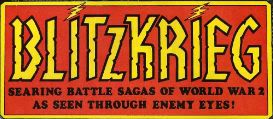 Here's a thing: In MAN OF ROCK by Bill Schelly, a book which is all about Joe Kubert and the things he has spent his time doing, there is no mention of BLITZKRIEG.
(Other than that Bill Schelly's book is, however, VERY GOOD!)
Here's a thing: In MAN OF ROCK by Bill Schelly, a book which is all about Joe Kubert and the things he has spent his time doing, there is no mention of BLITZKRIEG.
(Other than that Bill Schelly's book is, however, VERY GOOD!)